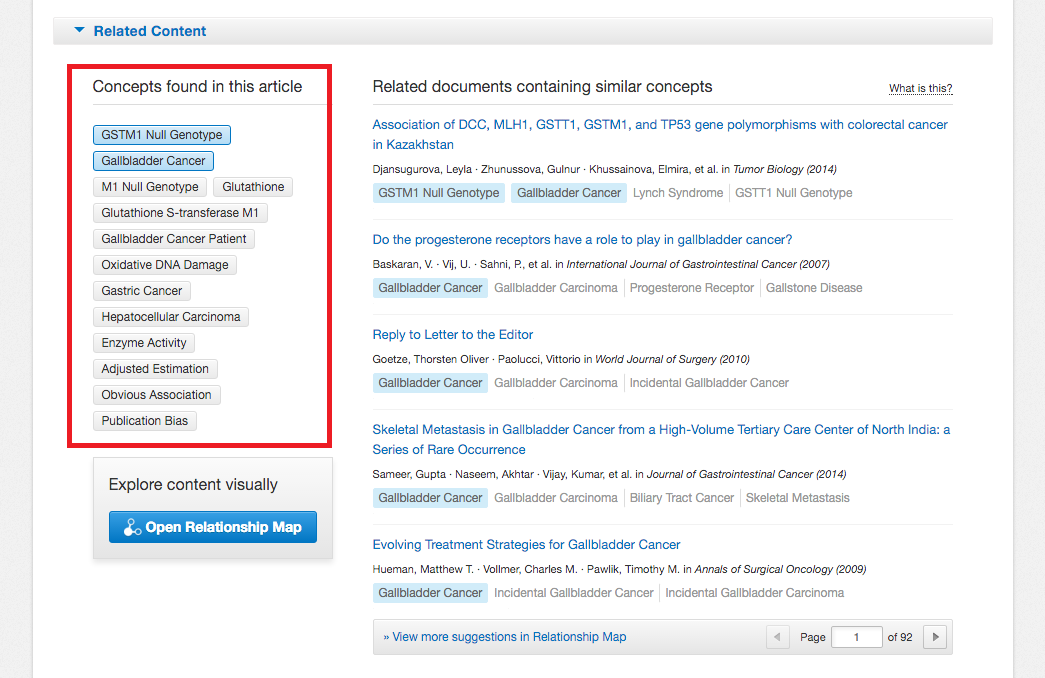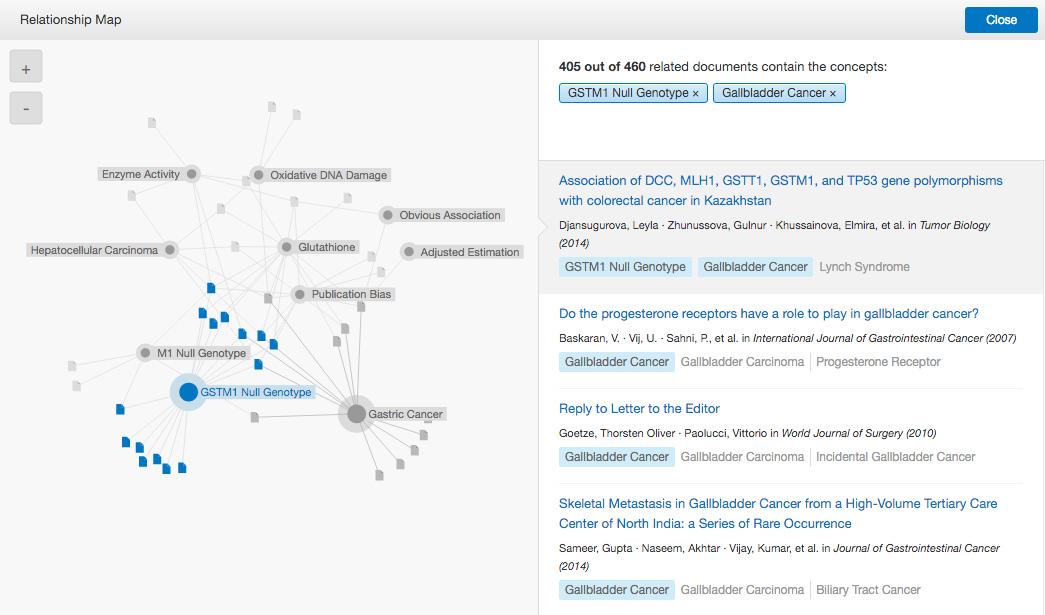I searched the internet for a while with all kinds of keyword combinations of “automobile,” “chemistry,” “marketing“ “vintage,” etc. and after thoroughly checking the various results lists I found an article published by the American Chemical Society in 1974 entitled ‘Analytical Chemistry and consumerism in the automobile.’ Quite a good piece for a few of my funnier areas of interest, sure, but it took me more time to discover than I anticipated and a more recent publication would have made me even happier. Perhaps impossible!? Not so with semantic search technology.
Now think about a more realistic scenario, e.g. in cancer research. Let’s say you are a researcher dealing with the challenges in gallbladder cancer and trying to identify an association between glutathione S-transferase and this cancer. You quickly do a keyword search on SpringerLink, which has proven to be a great source for papers in medicine. You find useful articles using both the quick and advanced search function directly on the site. But you’d like to feel more inspired by what’s going on–not only in your core fields of interest, but beyond, too.
Here’s what you do: you click on the ‘Related Content’ tab underneath one of your selected articles. And that’s where semantic search technology comes in handy. Through Springer’s pilot project with UNSILO (unsilo.com) and their technology embedded in SpringerLink, you are able to find numerous related biomedical documents.
To explain in plain English, UNSILO’s semantic technologies can leverage the context of terms and phrases that appear in research articles. Rather than basing a search on keywords that were assigned to the article manually, their algorithm characterizes the article by identifying so called ‘concepts’, which were found in the article and are in common use among authors of similar articles. On SpringerLink, you can see which concepts a publication is tagged with.
Choose your preferred view: a table (as shown above) or if you click the button “Open Relationship Map”, you get a graphically visualized format (below). By placing your mouse over the document icons in the graph, you can see the titles of related articles that may be of relevance. Clicking on the articles’ titles leads you to their abstracts or full texts. From the concept list (highlighted in red above) you can choose additional relevant concepts to get a list of articles that match your interest.
You may discover concepts you hadn’t thought about before, which in my opinion is the real beauty of this technology: you can find great articles to inspire new thinking for your work.
Get to know what UNSILO’s technology can do for you on SpringerLink. Play around with the concepts, find related articles and share your feedback with us. We are always looking to improve!
In the meantime I will be exploring newly discovered content at the intersections of chemistry, marketing and the vintage automobile world 😉



